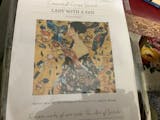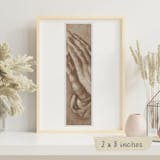Piet Mondrian (4)
Piet Mondrian, the Dutch painter whose name is almost synonymous with the abstract art movement known as Neoplasticism, was a pioneer who turned simple lines and primary colors into a profound visual language. Born in 1872 in the Netherlands, Mondrian began his career by painting landscapes and still lifes, but it didn’t take long for him to break away from the figurative and dive headfirst into abstraction.
Mondrian’s artistic journey wasn’t just about painting what he saw, but about creating a new way of seeing altogether. Early in his career, he experimented with impressionistic and symbolic styles, even spending time in Paris and interacting with other avant-garde artists. However, by the 1920s, Mondrian was moving toward a more radical abstraction, driven by his belief that art could express pure, universal order. He stripped down his compositions to the most basic elements: straight lines, rectangles, and a limited color palette of primary colors—red, blue, yellow—along with black, white, and gray.
His most famous work, Composition with Red, Blue, and Yellow, is a perfect example of this reduction to essentials. The painting is made up of a series of rectangles and squares in primary colors, carefully arranged in a balanced grid. It looks deceptively simple, but beneath the surface, it’s a masterpiece of precision and intention. For Mondrian, the horizontal and vertical lines symbolized the basic rhythms of nature and the universe, while the colors expressed the dynamic relationships between elements.
Mondrian’s journey from naturalism to abstraction wasn’t just an artistic choice—it was a philosophical one. He believed that art could reveal deeper truths about life, and by stripping away the superfluous, he hoped to reveal a higher, more universal order. His bold, geometric compositions may seem simple at first glance, but they speak to a complex vision of the world, one that seeks balance, harmony, and the beauty of pure abstraction. Piet Mondrian didn’t just change how we see art—he changed how we see the world itself.














